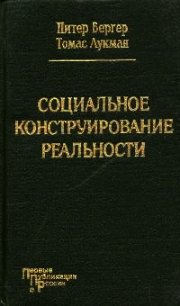Социальное влияние - Зимбардо Филип Джордж (книги без регистрации полные версии .TXT) 📗
Krosnick,]. A. (1988). The role of attitude importance in social evaluation: A study of policy preferences, presidential candidate evaluations, and voting behavior. Journal of Personality and Social Psychology, 55, 196–210.
Kruglanski,A. W., and Mayseless, O. (1987). Motivational effects in the social, comparison of opinions. Journal of Personality and Social Psychology, 53, 834–842.
Kunst — Wilson, W. R., and Zajonc, R. B. (1980). Affective discrimination of stimuli that cannot be recognized. Science, 207, 557–558.
Kyle,S.O.. and Falbo, T. (1985). Relationships between marital stress and attributional preferences for own and spouse behavior. Journal of Social and Clinical Psychology, 3, 339–351.
Landers, S. (1990). Sex, condom use up among teenage boys. АРА Monitor, Apr., 25.
Landy,D. (1972). The effects of an overheard audience's reaction and attractiveness on opinion change. Journal of Experimental Social Psychology, 8, 276–288.
Langer, E. (1989). Mindfulness. Reading, MA: Addison — Wesley.
Langer, E., and Abelson, R. P. (1974). A patient by any other name…: Clinical group differences in labelling bias. Journal of Consulting and Clinical Psychology, 42, 4–9.
Langer, E., Blank, A., and Chanowitz, B. (1978). The mindlessness of ostensibly thoughtful action: The role of «placebic» information in interpersonal interaction. Journal of Personality and Social Psychology, 36, 635–642.
Langer, £., and Piper, A. (1987). The prevention of mindlessness. Journal of Personality and Social Psychology, 53, 280–287.
Lanzetta, 1. Т., Sullivan, D. G., Masters, R. D., and McHugo, G. J. (1985). Viewers' emotional and cognitive responses to televised images of political leaders. In S. Kraus and R. M. Perloff (Eds.), Mass media and political thought: An information processing approach (pp. 85–115). Beverly Hills, CA: Sage.
Lee,M. Т., and Ofshe, R. (1981). The impact of behavioral style and status characteristics on social influence: A test of two competing theories. Social Psychology Quarterly, 44, 73–82.
Leippe, M. R. (1979). Message exposure duration and attitude change: An information processing analysis of persuasion. Unpublished doctoral dissertation, Ohio State University.
Leippe, M. R.(1980). Effects of integrative memorial and cognitive processes on the correspondence of eyewitness accuracy and confidence. Law and Human Behavior, 4, 261–274.
Leippe, M. R. (1983). Persuasion, cognitive responses, and message exposure duration: Evidence for thought reversal. Paper presented at the meeting of the Eastern Psychological Association.
Leippe, M. R., and Elkin, R. A. (1987). When motives clash: Issue involvement and response involvement as determinants of persuasion. Journal of Personality and Social Psychology, 52, 269–278.
Leippe, M. R., and Romanczyk.A. (1989). Reactions to child (versus adult) eyewitnesses: The influence of jurors' preconceptions and witness behavior. Law and Human Behavior, 13, 103–131.
Leippe, M. R., Romanczyk, A., and Manion, A. P. (1990). Eyewitness persuasion: How and how well do factfinders judge the accuracy of adults' and children's memory reports. Manuscript submitted for publication, Adelphi University.
Leippe, M.R., Wells, G.L., and Ostrom., T.M. (1978). Crime seriousness as a determinant ot
accuracy in eyewitness identification. Journal ol Applied Psychology, 63, 345–351.
Lepper,M.R., Greene, D., and Nisbett,R.E. (1973). Undermining children's intrinsic interest with extrinsic reward: A test of the overjustifica — tion hypothesis. Journal of Personality and Social Psychology, 28, 129–137.
Leventhal, H. (1970). Findings and theory in the study of fear communications. In L. Berkowitz (Ed.), Advances in experimental social psychology (vol. 5). New York: Academic Press.
Leventhal, H., Watts, J. C, and Pagano, F. (1967). Effects of fear and instructions on how to cope with danger. Journal of Personality and Social Psychology, 6, 313–321.
Lewisohn, P. M., Mischel, W., Chapline, W., and Barton, R. (1980). Social competence and depression: The role of illusory self — perceptions. Journal of Abnormal Psychology, 89, 203–212.
Liebert, R. M., and Spra[kin, J. (1988). The early window: Effects of television on children and youth (3d ed.). New York: Pergamon.
Lifton,R.K. (1969). Thought reform and the psychology of totalism. New York: Norton.
Lind, E.A. (1982). The psychology of courtroom procedure. In N. L. Kerr and R. M. Bray (Eds.), The psychology of the courtroom (pp. 13–38). New York: Academic Press.
Lind, E. A., Erickson, В., Conley, J. M., and O'Barr, W.M. (1978). Social attributions and conversational style in trial testimony. Journal of Personality and Social Psychology, 36, 1558–1567.
Lind, E. A., Thibault,]., and Walker, L. (1973). Discovery and presentation of evidence in adversary and nonadversary proceedings. Michigan Law Review, 71, 1129–1144.
Lindsay, R. С L., Wells, G. L., and Rumpel, C. (1981). Can people detect eyewitness identification accuracy within and between situations? Journal of Applied Psychology, 66, 79–89.
Loftus, E.F. (1979). Eyewitness testimony. Cambridge, MA: Harvard University Press.
Loftus, E. F. (1974). Reconstructing memory: The incredible witness. Psychology Today, Dec, 116–119.
Loftus, E. F. (1984). Eyewitnesses: Essential but unreliable. Psychology Today, Feb., 22–26.
Loftus, E. F., Miller, D. G., and Burns, H. J. (1978). Semantic integration of verbal information into a visual memory. Journal of Experimental Psychology: Human Learning and Memory, 4, 19–31.
London, H. (1973). Psychology of the persuader. Morristown, NJ: General Learning Press.
Lord, С G., Lepper, M. R., and Preston, E. (1984). Considering the opposite: A corrective strategy for social judgment. Journal of Personality and Social Psychology, 47, 1231–1243.
Lord, С. О., Ross.L., and Lepper, M.R. (1979). Biased assimilation and attitude polarization: The effects of prior theories on subsequently considered evidence. Journal of Personality and Social Psychology, 37, 2098–2109.
Luchlns,A. (1957). Primacy — recency in impression formation. In C. I. Hovland (Ed.), The order of presentation in persuasion. New Haven, CT: Yale University Press.
Luthans.F., Paul,R., and Baker, D. (1981). An experimental analysis of the impact of contingent reinforcement on salespersons' performance behavior. Journal of Applied Psychology, 66,314–323.
Lutz, W. (1989). No one died in Tiananmen Square. The New York Times, July 12, Al, A9.
Luus, C.A.E., and Wells, G. L. (1991). Eyewitness identification and the selection of distractors for lineups. Law and Human Behavior, in press.
Lydon, J. E., and Zanna, M. P. (1990). Commitment in the face of adversity: A value — affirmation approach. Journal of Personality and Social Psychology, 58, 1040–1047.
Maccoby, N., Farquhar, J. W., Wood, P. D., and Alexander, J. (1977). Reducing the risk of cardiovascular disease: Effects of a community — based campaign on knowledge and behavior. Journal of Community Health, 3, 100–114.
MacCoun, R. J., and Kerr, N. L. (1988). Asymmetric influence in mock jury deliberations: Jurors' bias toward leniency. Journal of Personality and Social Psychology, 54, 21–33.
Maddux, J. E., and Rogers, R. W. (1983). Protection motivation and self — efficacy: A revised theory of fear appeals and attitude change. Journal of Experimental Social Psychology, 19, 469–479.




